Three-Position Ice Tools
My final project for this course was to design and manufacture a pair of ice tools for use in both competitive and natural settings. Over the past couple of months, I have gone from vague goals to ideation, design, and manufacturing to make a pair of ice tools that are optimized for the technical movement and intense strain of competitions, have three positions for optimal efficiency and reach, and yet can still be swung into ice.
Ice tools are quite expensive so doing this has saved money in purchasing a pair, but even more than that, currently no tool like this exists. No manufacturer or equipment company produces a tool with all of the above specifications so the tools I’ve designed are unique both in form and function.
Aesthetics
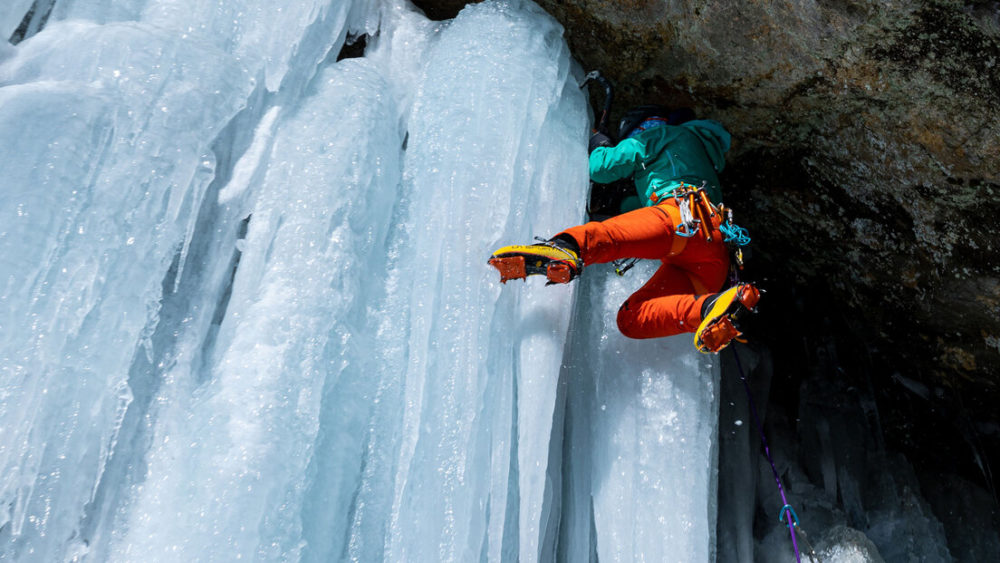 When making a pair of ice tools, they don’t need to conform to the practical desire to be understated and minimal. Most of the work of this project did go into making them functional, but I think they hold up as sculptural pieces as well. I did my best to create pattern and rhythm in the three-position layout and the contrast between the tight radiuses on the inside of the piece and the more gradual curves of the spine gives them a unique look.
When making a pair of ice tools, they don’t need to conform to the practical desire to be understated and minimal. Most of the work of this project did go into making them functional, but I think they hold up as sculptural pieces as well. I did my best to create pattern and rhythm in the three-position layout and the contrast between the tight radiuses on the inside of the piece and the more gradual curves of the spine gives them a unique look.
The tools are dominated by industrial elements and artifacts of their construction, a design choice that also influenced my upcycling project. However, the ice tools represent a much higher fidelity product and are flamboyant, sculptural artifacts with an industrial and maximalist aesthetic.
Design Influences
The biggest challenge of this project was to create a design optimized for use in competitions but still usable in real ice. Currently, the vast majority of ice tools are separated to either be competition tools or outdoor tools, there are also a few that attempt to bridge the gap, making concessions for each discipline.
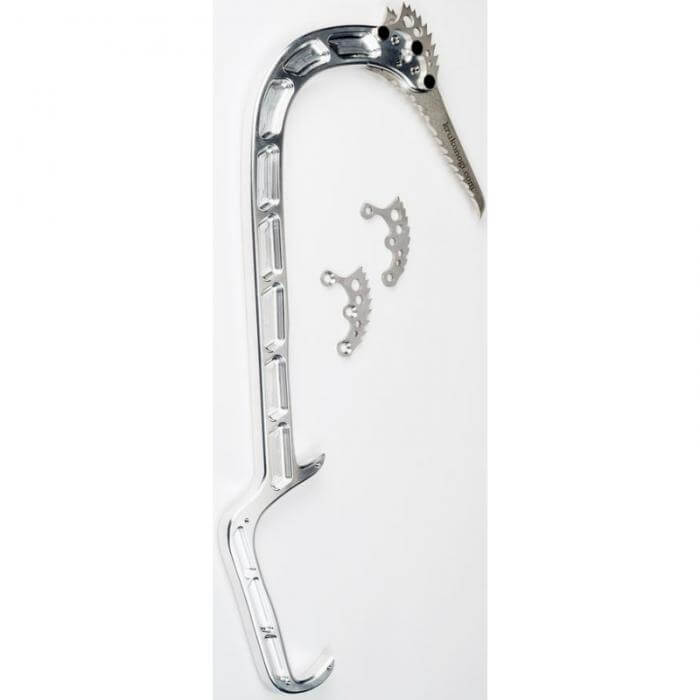 This is the Krukenogi Svarog, a pure competition tool. Its very steep pick angle means that it remains steady even on extremely small or flat holds and at high angles on extended technical moves. However, the angle is so steep that it cannot be swung into ice and therefore cannot be used for outdoor ice climbing. Our tool looks the most similar to this example since it has all the technical capabilities we are looking for, but we will implement a design trick in the handle layout to make it swingable into real ice.
This is the Krukenogi Svarog, a pure competition tool. Its very steep pick angle means that it remains steady even on extremely small or flat holds and at high angles on extended technical moves. However, the angle is so steep that it cannot be swung into ice and therefore cannot be used for outdoor ice climbing. Our tool looks the most similar to this example since it has all the technical capabilities we are looking for, but we will implement a design trick in the handle layout to make it swingable into real ice.
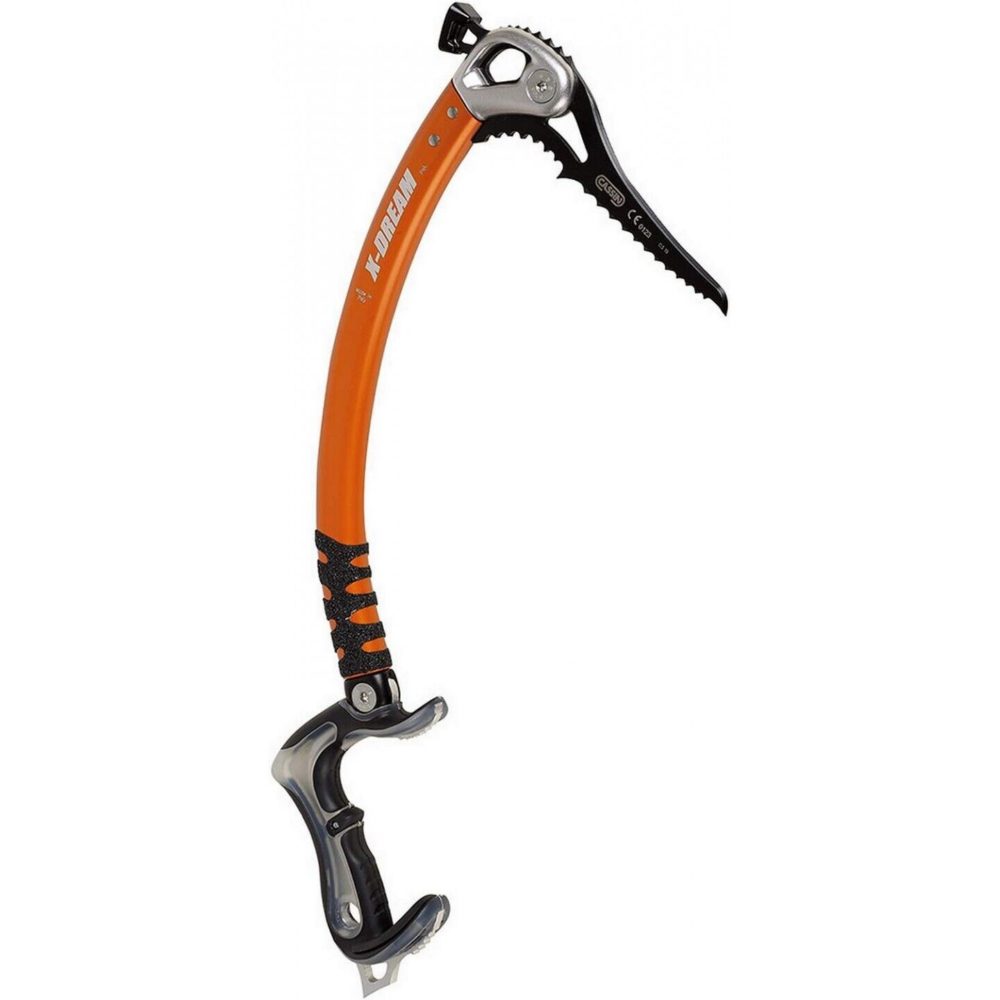 This is the Cassin X-Dream, the most common bridge between competition and outdoor ice tools (also known as a mixed tool). It has a much more moderate pick angle meaning that it can be used in ice, at the cost of being somewhat unsteady in highly technical movement.
This is the Cassin X-Dream, the most common bridge between competition and outdoor ice tools (also known as a mixed tool). It has a much more moderate pick angle meaning that it can be used in ice, at the cost of being somewhat unsteady in highly technical movement.
Additionally, it has a much more constrained handle layout, supporting only two fixed-hand positions, limiting options for moves requiring highly precise body tension and positioning.
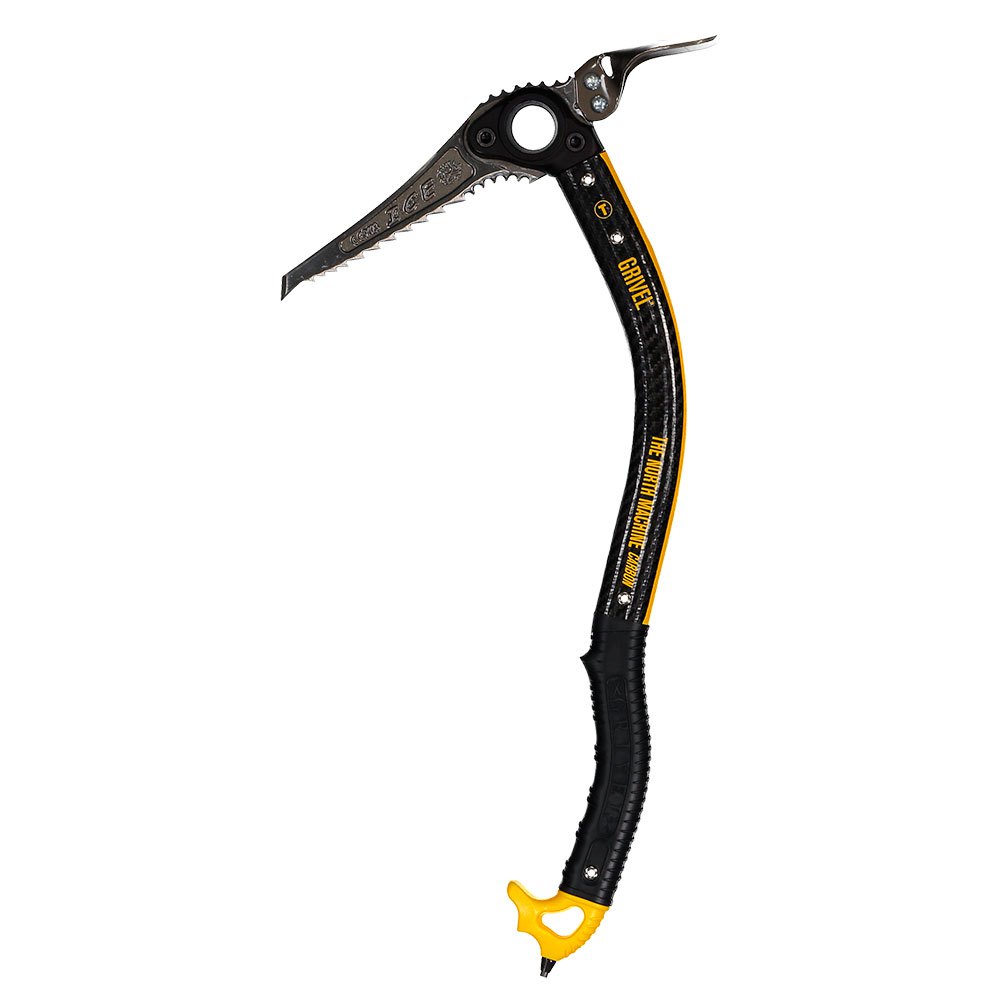 Lastly, this is the Grivel Machine, a purely outdoor ice tool used primarily for mountaineering. It has some pretty sweet features from having a hollow head for clipping onto a harness to having a full carbon fiber shaft so that it doesn’t conduct heat and freeze your hands. However, the very shallow pick angle and the total lack of choils (the little curvy bits that you rest your pinkies on) make it unusable in a technical, competitive environment.
Lastly, this is the Grivel Machine, a purely outdoor ice tool used primarily for mountaineering. It has some pretty sweet features from having a hollow head for clipping onto a harness to having a full carbon fiber shaft so that it doesn’t conduct heat and freeze your hands. However, the very shallow pick angle and the total lack of choils (the little curvy bits that you rest your pinkies on) make it unusable in a technical, competitive environment.
In terms of shape our design has few similarities, but one of the other factors that makes this pick great for swinging into ice is that the majority of its weight is in the head and the pick as opposed to the shaft, giving the swing more momentum. This is a lesson I was able to take and apply to my own tools.
Design Results: Specifications and Features
-
Narrow pick angle profile
- Ice picks are sharp, but in order to stay on a hold or in the ice, they have to be pointing downward. This might seem like a trivial thing to achieve, but it was by far the most challenging design puzzle because if the angle is too shallow, the pick wouldn’t stay on small holds, but if the angle is too steep you would just be swinging the blunt top of the pick into the ice instead of the sharp point. Moreover, each distinct hand position has a different pick angle, and they can’t all be in the same location, which makes the pick angle variance for three-position tools very high. I designed a compressed handle layout to overcome this constraint and narrow the angle profile to make the tool usable in any terrain.
-
Three separate hand positions
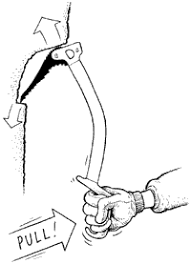 The best and most advanced competition-style dry tools have three hand positions. This is because highly technical routes require you to frequently put both hands on the same tool in order to swap hands or hand positions. This is achievable with only two hand positions, but for any given move you are locked into the positioning in which you initiate the move. The addition of the third handle allows you to essentially play three-card-monte, moving either hand to any position at any time.
The best and most advanced competition-style dry tools have three hand positions. This is because highly technical routes require you to frequently put both hands on the same tool in order to swap hands or hand positions. This is achievable with only two hand positions, but for any given move you are locked into the positioning in which you initiate the move. The addition of the third handle allows you to essentially play three-card-monte, moving either hand to any position at any time.
-
Strength
- Ice tools undergo huge strain. Of course, when you’re hanging most of your body weight off of a blade there are significant forces involved, but modern technical dry-tooling multiplies these forces by orders of magnitude when introducing camming or steining techniques. The tools I’ve designed have a safety factor of 2.5 and are strong enough to be used in any move in any position, although certain ones introduce enough strain to potentially snap the pre-manufactured picks.
-
Size
- In order for my tools to be usable in competition they have to meet the UIAA (the governing body for competitive ice climbing and dry tooling) guidelines. They require that all tools fit within a 50 x 30 x 6.5 cm box and have no mechanical attachment to the hand.
-
Weight
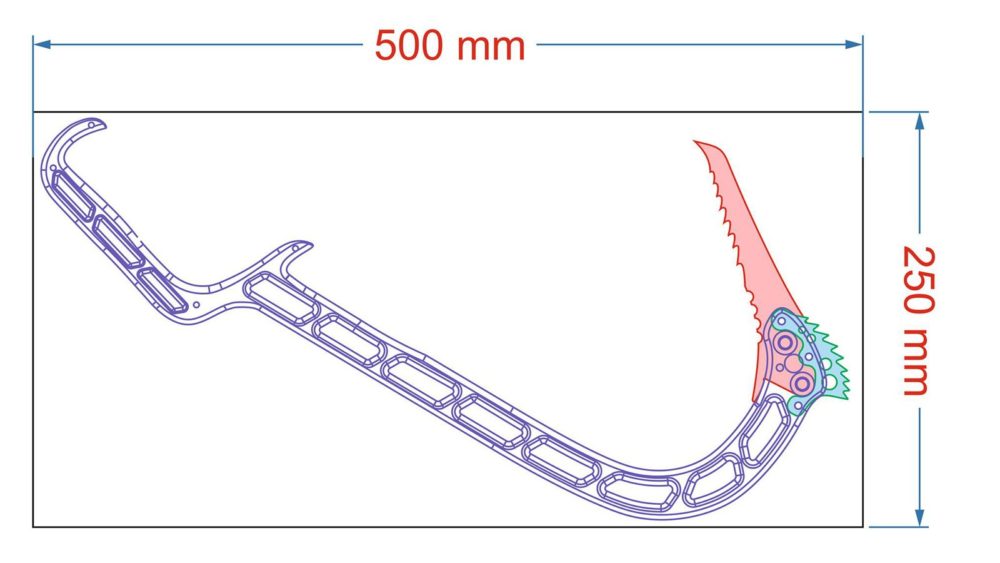
- There is no strict rule about how heavy or light a tool has to be, but you have to be able to hold two of them above your head for many minutes at a time. Good ice tool technique involves primarily your wrist, they can’t be so heavy that they are a burden to swing. The tools I’ve made came out somewhat heavier than most of those that are mass-produced, but not egregiously so, and this was the be expected due to the scale of the design.
Results
The tools exceeded my expectations, they are precise, powerful, and gorgeous.
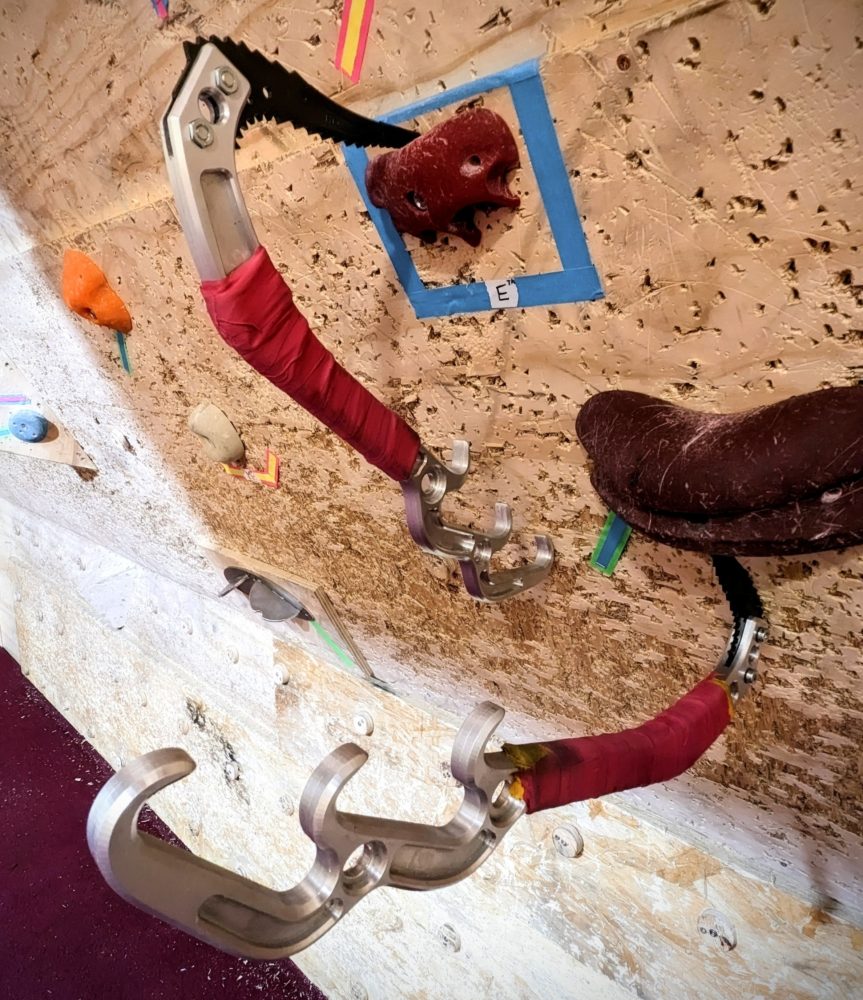
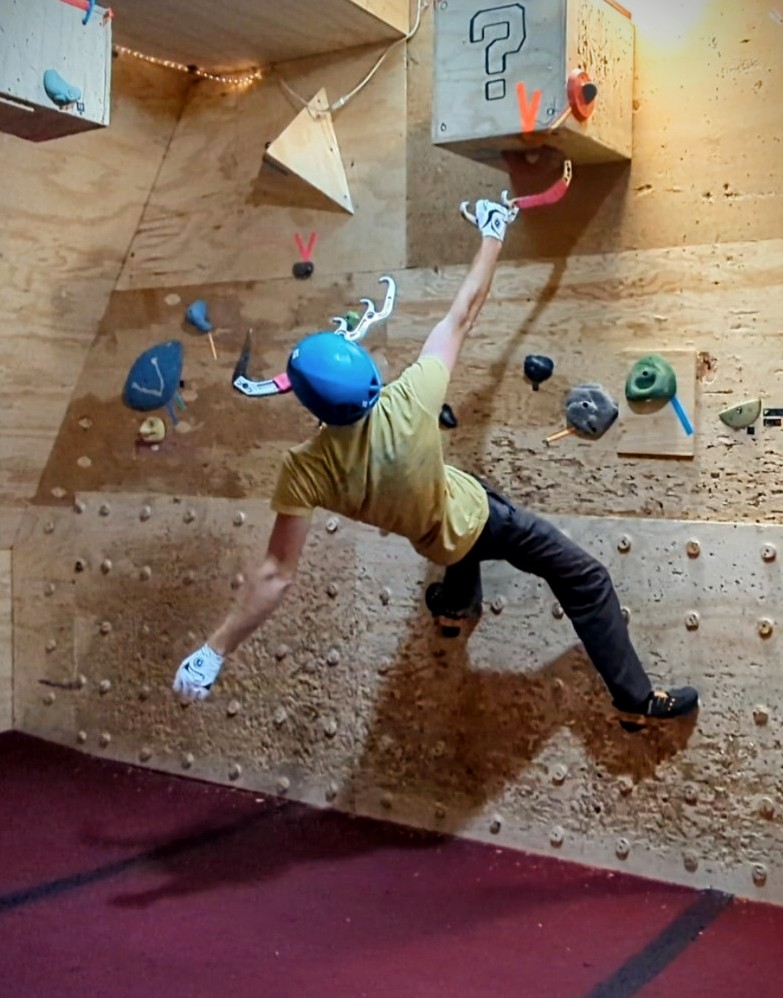
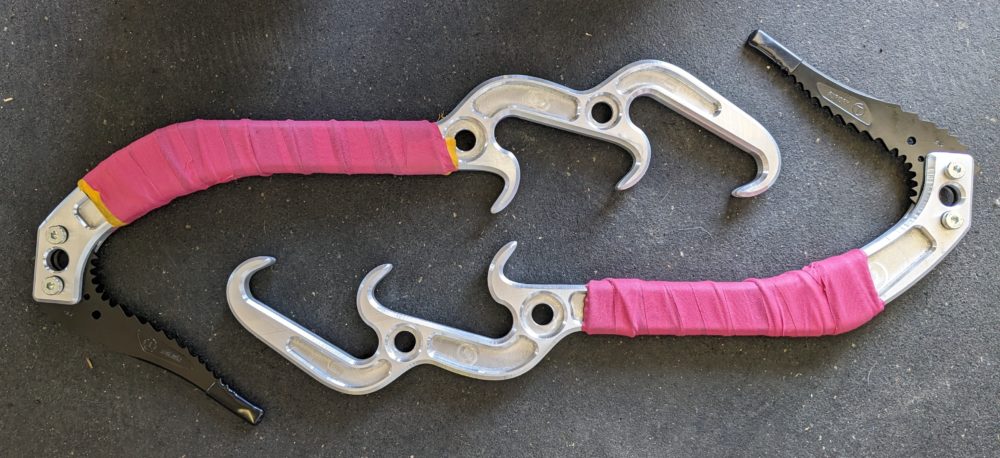

3 Comments. Leave new
Amazing work man. The level of detail and execution here is top-notch. I had never heard of these indoor resin ice climbing walls, sounds super fun and probably great practice in a controlled environment. Have you thought about coating the picks in another protective material or color?
Dude I am beyond impressed with these things. From the beautiful initial design to the precisely fabricated final product these things are sick! My only question is what gnarly routes are you planning on putting up with these things??
Optimized pieces of machined metal have to be the most beautiful objects I can think of. Definitely a unique set of constraints that drive the form as well. Climbing gear in general seems to be driven by a particular aesthetic. How well do you think your project fits in with the surrounding culture of this type of item?